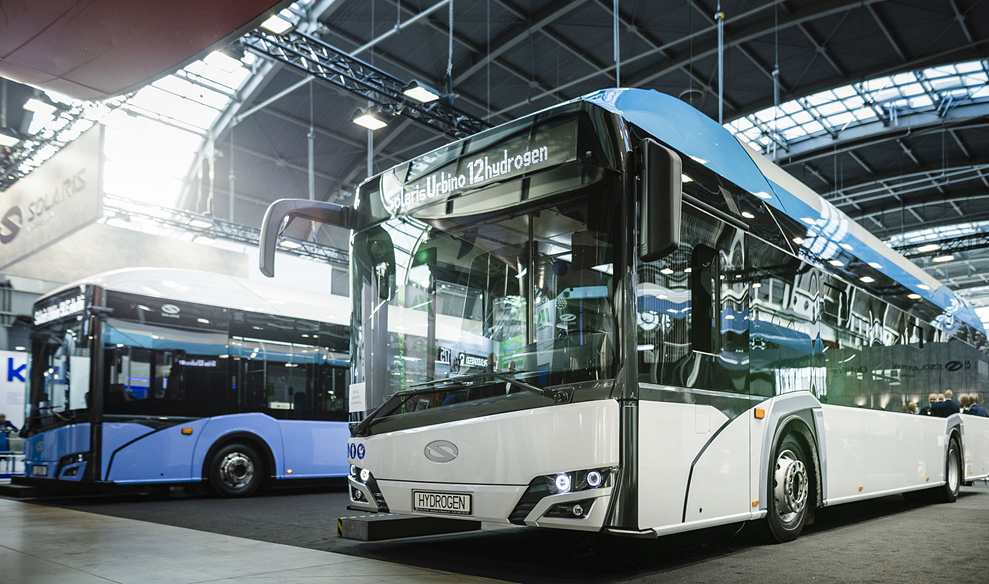Evaluating Hydrogen And Battery Electric Buses For European Transit Needs

Table of Contents
Battery Electric Buses (BEBs) in European Transit
Battery Electric Buses (BEBs) represent a mature technology gaining significant traction in European cities. Their widespread adoption is driven by several key benefits.
Advantages of BEBs:
- Lower Upfront Cost: Compared to hydrogen fuel cell electric buses (FCEBs), BEBs typically boast a lower initial purchase price, making them a more financially accessible option for many transit authorities.
- Established Infrastructure in Certain Areas: While still developing, charging infrastructure for BEBs is more readily available in some European cities than hydrogen refueling stations, facilitating smoother integration into existing transit systems.
- Proven Reliability and Performance: BEBs have a proven track record of reliable operation across various climates and terrains, offering a degree of operational certainty.
- Lower Operating Costs (in Certain Regions): In regions with a high percentage of renewable energy in their electricity grids, the running costs of BEBs can be significantly lower than those of FCEBs, particularly considering the cost of green hydrogen production.
- Environmental Benefits: BEBs offer significant reductions in tailpipe emissions compared to diesel buses, contributing to improved air quality in urban centers.
Disadvantages of BEBs:
- Limited Range: BEBs often have a shorter range than hydrogen buses, limiting their suitability for longer routes and posing challenges for operations in areas with less frequent charging opportunities. Range anxiety remains a significant factor.
- Longer Refueling Times: Charging times for BEBs are considerably longer than refueling times for hydrogen buses, potentially impacting operational efficiency and requiring careful route planning.
- Battery Lifespan and Replacement: Battery lifespan and the associated replacement costs represent a significant long-term expense, impacting the overall total cost of ownership.
- Electricity Grid Upgrades: Many European cities require substantial upgrades to their electricity grid infrastructure to handle the increased demand from a large fleet of BEBs.
- Battery Sourcing and Recycling: Concerns regarding the ethical sourcing of battery materials and the environmental impact of battery recycling remain important considerations.
Hydrogen Fuel Cell Electric Buses (FCEBs) in European Transit
Hydrogen Fuel Cell Electric Buses (FCEBs) offer an alternative approach to sustainable public transport, presenting unique advantages and challenges.
Advantages of FCEBs:
- Extended Range: FCEBs boast a much longer range than BEBs, making them ideal for longer routes and less frequent charging opportunities. This is particularly important for inter-city routes and challenging terrains.
- Faster Refueling: Refueling an FCEB is significantly faster than charging a BEB, minimizing downtime and improving operational efficiency.
- Potential for Zero Tailpipe Emissions: When powered by green hydrogen (produced using renewable energy sources), FCEBs offer the potential for truly zero tailpipe emissions, substantially reducing their environmental footprint.
- Suitability for Demanding Routes: Their longer range and faster refueling make FCEBs suitable for demanding routes and challenging terrains where BEBs might struggle.
Disadvantages of FCEBs:
- Higher Upfront Cost: The initial investment for FCEBs is considerably higher than for BEBs, representing a significant barrier to adoption for many transit operators.
- Limited Hydrogen Refueling Infrastructure: The lack of widespread hydrogen refueling infrastructure across Europe poses a major hurdle to the large-scale deployment of FCEBs.
- Green Hydrogen Production Challenges: Producing green hydrogen requires significant energy and investment, impacting its overall environmental benefits and cost-effectiveness.
- Lower Energy Efficiency: FCEBs generally have lower energy efficiency compared to BEBs, potentially affecting operational costs.
- Hydrogen Storage and Transportation: The storage and transportation of hydrogen present significant logistical challenges, requiring specialized infrastructure and safety protocols.
Comparative Analysis: BEBs vs. FCEBs for European Cities
| Feature | Battery Electric Bus (BEB) | Hydrogen Fuel Cell Electric Bus (FCEB) |
|---|---|---|
| Upfront Cost | Lower | Higher |
| Range | Limited | Extended |
| Refueling Time | Longer | Faster |
| Infrastructure | More readily available (in some areas) | Limited |
| Environmental Impact | Lower tailpipe emissions | Potential for zero tailpipe emissions (with green hydrogen) |
| Operational Costs | Potentially lower (with renewable energy) | Potentially higher |
The optimal choice between BEBs and FCEBs depends on several factors, including route length, terrain, existing infrastructure, the availability of renewable energy, and the total cost of ownership (TCO). A lifecycle assessment considering manufacturing, operation, and end-of-life impacts is crucial for a comprehensive evaluation. Cities like Hamburg and London are already testing and deploying both technologies, offering valuable real-world data for comparative analysis.
Future Trends and Policy Implications for Hydrogen and Battery Electric Buses in Europe
Ongoing research and development in battery technology and hydrogen production are continuously improving the performance and cost-effectiveness of both BEBs and FCEBs. The European Union's commitment to sustainable transportation, through various policies and financial incentives, will play a crucial role in shaping the future landscape of urban transit. Synergistic approaches, combining both BEBs and FCEBs within a single transit system to optimize operational efficiency, are gaining traction. The increasing reliance on renewable energy sources for charging BEBs and producing green hydrogen for FCEBs will be a key determinant in achieving truly sustainable public transport.
Conclusion: Making Informed Decisions about Hydrogen and Battery Electric Buses for European Transit
The choice between Hydrogen and Battery Electric Buses for European transit needs is complex and multifaceted. There's no one-size-fits-all answer. Factors like route characteristics, existing infrastructure, and energy mix heavily influence the optimal technology choice. Continued investment in research, development of robust infrastructure, and supportive policies are crucial for the successful transition to sustainable public transportation. Learn more about the specific requirements of your city or region and explore the potential of both hydrogen buses and battery electric buses to find the best solution for your unique needs. For further information, explore resources from the European Commission and relevant industry associations.

Featured Posts
-
 Is There A Deeper Connection Between Ed Sheeran And Rihanna
May 07, 2025
Is There A Deeper Connection Between Ed Sheeran And Rihanna
May 07, 2025 -
 Zambia Minister Tavio To Participate In Ldc Future Forum Apo Group Announcement
May 07, 2025
Zambia Minister Tavio To Participate In Ldc Future Forum Apo Group Announcement
May 07, 2025 -
 Trump Endorsement Of Xrp Institutional Investors Take Notice
May 07, 2025
Trump Endorsement Of Xrp Institutional Investors Take Notice
May 07, 2025 -
 Cleveland Cavaliers Vs San Antonio Spurs Injury News March 27th
May 07, 2025
Cleveland Cavaliers Vs San Antonio Spurs Injury News March 27th
May 07, 2025 -
 Understanding The Karate Kid Influence On Cobra Kai Netflix
May 07, 2025
Understanding The Karate Kid Influence On Cobra Kai Netflix
May 07, 2025
